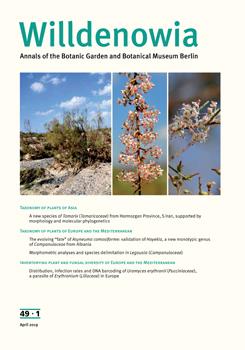Blackberries (Rubus subg. Rubus, Rosaceae) are perennial plants that form thickets of biennial spiny stems (canes), which grow in length in the first year and develop flowering laterals in the second year. In the present study, a hitherto overlooked separate type of stem is described, denoted as panicle shoot (PS, turio paniculatus) that occurs in several species of all three European blackberry sections. PSs are up to 2.5 m long, spring directly from the rootstock, terminate apically in a mostly large paniculate inflorescence (simple type) and may develop additional flowering branches (complex type). PSs can emerge from young (two-year old) and older rootstocks established sexually from seeds and vegetatively from tip-rooted canes, respectively. As a rule, they are biennially flowering shoots that develop flowering laterals in the second season. By virtue of their length, PSs tend to project with their panicles out of the surface of bushes and hence overcome the frequent fate of flowering laterals of low arching canes to become rapidly overgrown and overshadowed by surrounding vegetation.
Citation: Drenckhahn D. 2019: Panicle shoot, an overlooked stem type of several blackberries (Rubus, Rosaceae). – Willdenowia 49: 43–52. doi: https://doi.org/10.3372/wi.49.49106
Version of record first published online on 29 March 2019 ahead of inclusion in April 2019 issue.





